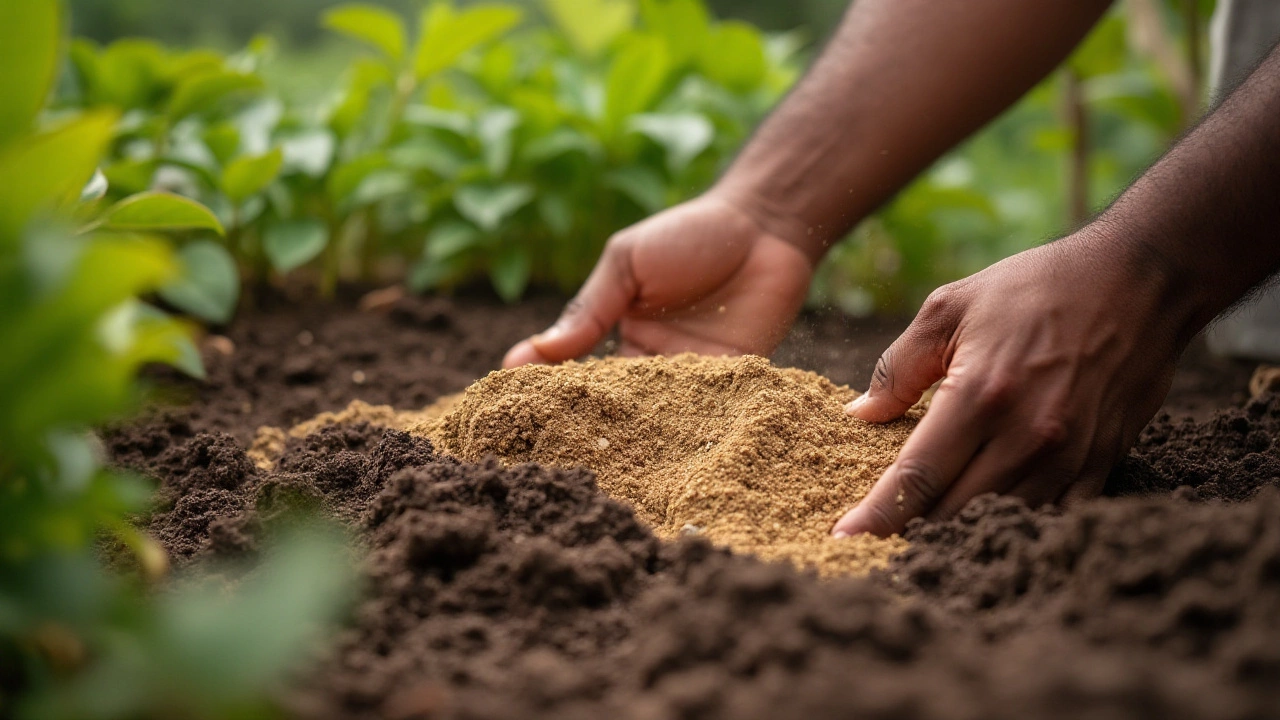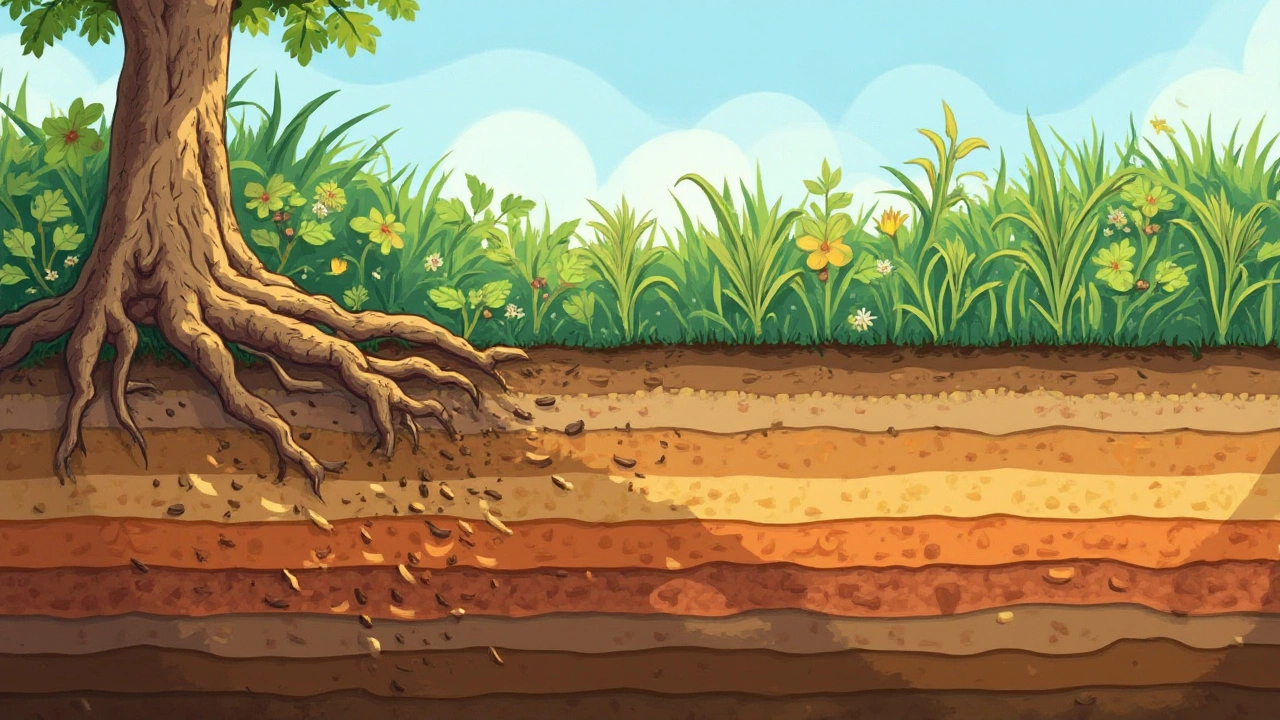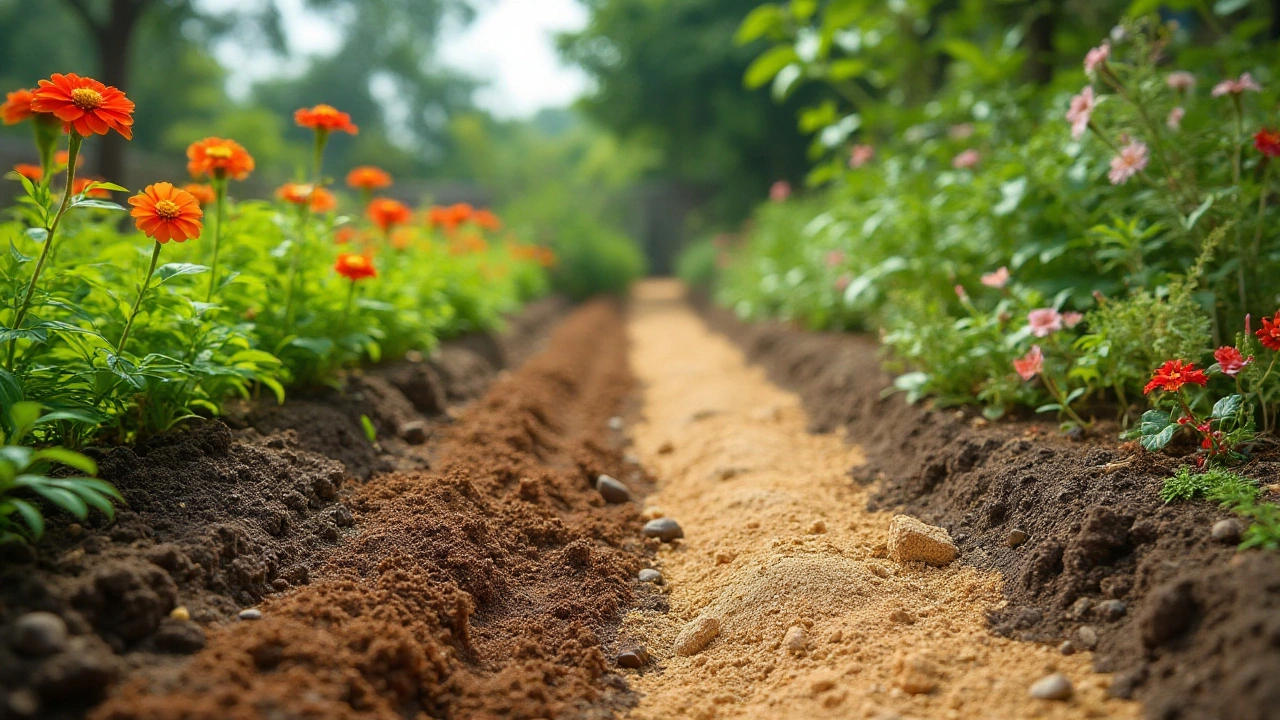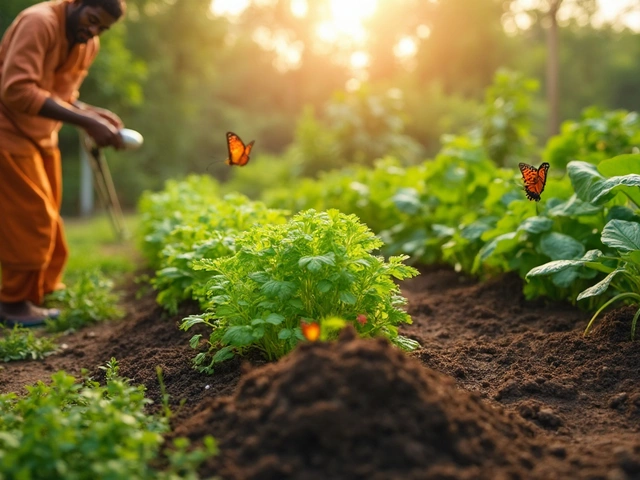Creating the ideal garden starts with understanding soil composition. Whether you're nurturing a vegetable patch or a flower bed, the type of soil you use can make a significant difference to plant health and growth. A common notion is that mixing sand into garden soil can enhance its quality, provide better aeration, and improve drainage. But the results aren't always straightforward. It's important to delve into when and why sand might—or might not—be the best solution for your soil woes.
Join us as we explore the potential benefits and risks of incorporating sand into your garden soil. By understanding soil dynamics and available alternatives, possibly including organic matter or other amendments, you can create a thriving garden. Our journey will unravel tips for enriching your soil so that your garden can be a place of beauty and bounty.
Benefits of Adding Sand to Soil
When it comes to optimizing your garden soil, one might consider the simple addition of sand as an effective method to improve soil structure. Sand, with its granular nature, offers increased porosity which can be beneficial especially in soils that are heavy and compact, like clay. By incorporating sand, gardeners hope to achieve better aeration and drainage, which are crucial for plant roots to breathe and for excess water to escape. Waterlogged roots often lead to rot, one of the common plant health issues. Sand, therefore, functions like a natural drainage system, mitigating risks associated with poor water management.
Another potential advantage of adding sand is the enhancement of the soil’s texture. Fine-textured soils like clay are often dense and challenging to work with, but a mix with coarser particles like sand can significantly decrease soil density. This makes the soil less sticky and easier to till. A lighter and more workable soil texture means that nutrients can reach plant roots more efficiently, promoting healthier and lusher growth. Root systems that encounter less resistance tend to spread wider, covering more area and thus supporting stronger plants.
Sand's role as a soil amendment doesn’t stop at physical improvements. Its mineral content can supplement nutrient-deficient soils. Although sand itself isn't nutrient-rich, by improving the physical conditions of the soil, it supports better microbial activity. Healthy microbial activity is essential for breaking down organic matter into nutrients that plants can absorb. This indirectly boosts soil fertility, encouraging vibrant plant life. Sand in garden soil, when used correctly, acts as a catalyst for an optimally balanced soil ecosystem.
"In some cases, adding sand to clay soil can increase its ability to support plant life by improving soil texture and drainage," advises John Bush, a respected horticulturist. "But it has to be done with careful consideration of the soil's initial composition."
However, it’s not just about throwing in any sand material. The type of sand you choose is critical. Coarse sand, often marketed as builders' sand, is typically preferred because of its larger particles. These particles create more space in the soil mix, which encourages root growth. Fine sand, such as play sand, should be avoided because it compacts too readily, defeating the purpose of using sand as a soil conditioner. A judicious selection of sand ensures that the benefits of texture and drainage are achieved without unintended consequences.
Optimal Scenarios for Sand Use
Not every garden bed will benefit from sand, as the efficacy of sand as a soil amendment largely depends on the original soil type. Sandy loam soils, which are already well-drained, might not see any notable improvements and can actually suffer from excessive drainage if sand is added indiscriminately. Clay-heavy soils, as earlier mentioned, are the primary candidates. For gardeners facing the challenge of pesky surface runoff or slow-draining garden paths, enriching the soil with a proportionate amount of sand can transform these vexing issues into lush green opportunities.Lastly, breaking through the myth that sand is the ultimate cure for all soil-related problems is crucial. It’s a tool, and like any tool, its effectiveness is based on proper use and understanding of the underlying conditions. A methodical approach to improve soil structure and function can lead to gardens that are both sustainable and stunningly healthy. For those willing to experiment thoughtfully with sandy amendments, the rewards can be lush flowers, bountiful harvests, and robust landscapes.

Potential Drawbacks
Delving into the practice of adding sand to improve garden soil, we often come face to face with some noteworthy challenges. A key point of concern lies in the fact that without the right balance, mixing sand with clay-heavy soil, for example, might turn your soil into a consistency akin to concrete, which can significantly impede plant growth. It's important to recognize that too much sand in already dense clay soil tends to compact, creating more barriers for plant roots rather than helping them.
Another point to consider is drainage. While it's often believed that sand in garden soil inherently boosts drainage, this isn't always the case. In reality, it's all about particle sizes and how they interact with each other. When fine sand is added to heavy soils like clay, the fine particles can actually fill the gaps in between larger clay particles. This process might leave you with soil that's denser and even less permeable than before. Inevitably, this can lead to waterlogging, which is as detrimental to plants as drought conditions. Proper drainage is not just about removing excess water quickly but allowing soil to retain necessary moisture, a balancing act that sand might disrupt if not managed correctly.
Furthermore, there is the nutrient aspect to ponder. Unlike organic matter, which decomposes and replenishes nutrients in the soil, sand offers no nutrients to plants. This poses the potential drawback of only altering the structure of your soil without offering the nutrition crucial for healthy plant development. Gardeners should be wary of relying solely on sand to resolve soil problems while overlooking essential nutrient replenishments.
According to landscape architect Julia Clarke, "The idea that sand can solve every soil ailment is quite misleading. It's essential to assess the specific soil profile you're working with and address its unique needs through a tailored soil amendment strategy."
Additionally, the cost could be a factor. Depending on the size of your gardening area, the amount of sand required to make a noticeable difference might be substantial, resulting in unexpected costs. Before deciding to add sand, consider the potential need for soil testing, which may also involve cost, but provides the necessary insights into the specific needs of your soil.
For those considering amending garden soil using sand, learning about these potential drawbacks is key. Spending adequate time assessing whether sand is the appropriate amendment for your specific soil type is worthwhile. Sometimes, the advantages gained by adding sand may be overshadowed by the challenges, and other more suitable alternatives should be explored. Whether you're attempting to improve a commercial garden's productivity or simply beautifying your backyard, understanding these aspects can greatly contribute to gardening success.

Alternatives to Sand
The quest to improve your garden's soil does not stop with just one amendment. While some might often consider using sand in garden soil to enhance aeration, it's crucial to recognize other effective alternatives that can optimize your soil's performance. Imagine your garden in its optimal health, growing lush plants that thrive not just for a season, but year after year. Instead of relying solely on sand, consider options like adding organic matter, such as compost, which can dramatically improve both soil structure and fertility. Compost is not only rich in nutrients, but it also gives the soil a spongy texture, aiding in water retention and drainage simultaneously. This balance ensures that your plants have access to water during dry spells, while excess moisture simply drains away after heavy rains.
Another notable alternative is the use of perlite and vermiculite, both of which have unique properties that could potentially outperform sand. Perlite is volcanic glass that expands under high temperatures, resulting in a lightweight material that, when mixed into soil, can significantly boost aeration and drainage. Similarly, vermiculite is a mineral that can hold water several times its weight, providing a reservoir for plants during dry conditions while still enhancing soil aeration. For gardeners worried about their basic clay or heavy soils, these amendments can work miracles by breaking up compacted layers without the risk of compaction that sand often brings.
The story of blissful gardening improvements doesn't end there. Coconut coir, a fibrous husk from coconuts, is gaining popularity as a sustainable, eco-friendly soil enhancer. It provides excellent moisture retention and root penetration support, offering an ethical alternative to peat moss, which is often harvested unsustainably. Interestingly, according to a study conducted by the Royal Horticultural Society, incorporating coconut coir can increase seed germination success by up to 25%, providing gardeners a reliable and renewable choice for their soil improvements.
"Perlite and vermiculite do more than just fluff the soil up—they create the perfect environment for roots to breathe and thrive," notes the Gardener's Journal.These amendments, rather than simply swapping out sand, hold the key to enhancing soil quality across varying climates and garden types, from urban balconies to sprawling backyard plots. Ground pine bark and leaf mold are other intriguing options, both proven to increase the soil's acidity and give nutrients a slower release, ensuring longer-term richness and fertility. Cultivating a mix of different types of organic matter allows gardeners to tailor soil conditions precisely to the needs of specific plants, achieving a more holistic and adaptive gardening approach.
For those grappling with nutrient-poor soils, green manure crops such as clover or alfalfa can revitalize the earth with their ability to fix nitrogen. Planting these cover crops during the off-season introduces valuable nutrients back into the ground, contributing to a healthier planting environment for subsequent seasons. Improving garden soil isn't a one-size-fits-all solution, but rather a symphony of amendments that can vary greatly with climate, soil type, and the plants you're eager to grow. By navigating away from conventional methods and exploring other viable options, you might unearth a new practice that suits both your garden's unique needs and sustainable gardening principles.

Tips for Soil Improvement
Creating the perfect soil for your plants requires more than just adding or removing a single element. Instead, it involves a combination of thoughtful choices and practical methods. Whether you're dealing with sandy soil, clay, or something equally challenging, there's always room for enhancement. One of the most effective methods to improve soil is by introducing organic matter. Adding well-rotted compost or manure boosts soil fertility, enhances microbial activity and helps retain moisture. This doesn't just nourish your plants but creates a thriving ecosystem within your garden soil.
Another notable technique is crop rotation. This ancient farming practice helps maintain soil nutrients and break cycles of pests and diseases. By rotating crops, you allow soil time to replenish, reducing the wear on specific nutrients. Plus, growing legumes like peas or beans can even enrich the soil by fixing nitrogen into it.
Soil structure is another crucial aspect. If your garden struggles with compaction, aeration might be your savior. You can aerate the soil by simply poking holes with a garden fork or using a commercial aerator. This simple step allows air and water to penetrate deeper, making your soil a welcoming haven for plant roots. The introduction of earthworms is another natural tool in improving aeration, as their movement through the soil creates channels for air and water.
Maintaining a healthy pH level ensures that plants have access to all necessary nutrients. Aim to test your soil regularly using a pH meter or a soil test kit. For most garden plants, a pH near neutral is ideal, and if needed, you can add lime to raise the pH or sulfur to lower it. Adjusting pH levels might seem daunting, but it's quite manageable once you become familiar with your specific soil needs.
Mulching also deserves a nod in the soil improvement narrative. By covering your soil surface with a layer of mulch, you can regulate soil temperature, retain moisture, and suppress weeds. Organic mulches, such as bark or straw, gradually decompose and add to the soil structure and fertility.
According to the USDA Natural Resources Conservation Service, "Properly managed soil functions as a vital living ecosystem that sustains plants, animals, and humans." This quote perfectly captures the essence of comprehensive soil management.
Finally, practicing sustainable watering techniques is vital for healthy soil. Over-watering can lead to poor plant health and promote disease. It's wise to water deeply but infrequently, allowing the topsoil to dry out between watering, encouraging roots to grow deeper. Using drip irrigation systems can also help target plant roots directly, minimizing water wastage.
With these tips, anyone can transform their garden soil into a vibrant, productive medium for plants. The key lies in observation, experimentation, and a bit of patience. Just remember, the most successful gardens are built on the foundation of well-cared-for soil.




